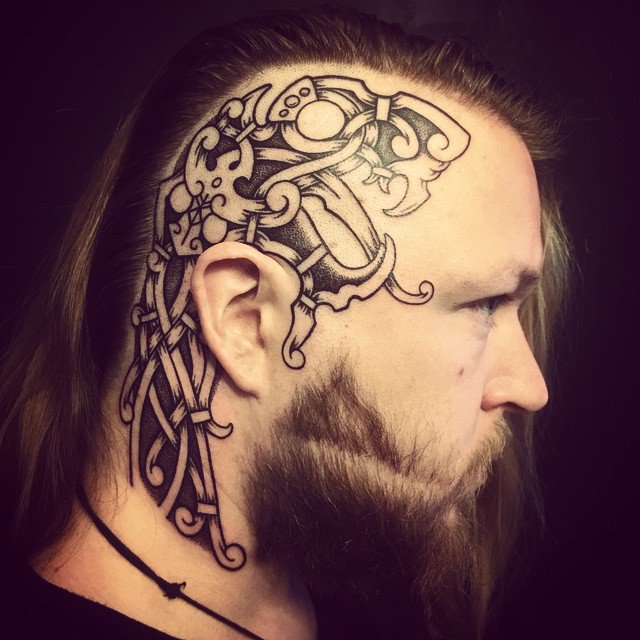Viking tattoos are among the most distinctive and recognizable forms of body art. Often featuring intricate designs incorporating traditional Norse symbols, these tattoos have a rich history and cultural significance that extends far beyond their striking visual appeal.
In this article, we’ll delve into the world of Viking tattoos – exploring their historical context, symbolism, styles/designs, placement/care considerations, famous artists in this field, and modern-day cultural impact.

History and Symbolism of Viking Tattoos
The Vikings were known for their fierce warrior spirit and deep connection to nature. As such, many Viking tattoo designs incorporate elements from both worlds – with animals like wolves or bears representing strength/power while natural motifs such as trees or mountains symbolize endurance/stability.
Other common themes include depictions of gods/goddesses like Odin/Thor/Freya, runes (ancient Norse writing), or ships/sailing imagery evoking travel/exploration.
Types of Viking Tattoos
There are several different styles/types of Viking tattoos to consider when selecting a design:
– Traditional/Norse-inspired: These typically feature bold lines/shading similar to ancient artwork.
– Contemporary reimagining: Modern-day interpretations may blend traditional motifs with more abstract shapes/colors.
– Realistic portraits: Some tattoo artists specialize in creating lifelike images depicting specific figures from Norse mythology/history.
– Geometric patterns: More minimalist designs focus on repeating shapes/patterns rather than figurative imagery.
Choosing the Right Viking Tattoo Design
When deciding which type/style/motif speaks to you personally, there are several factors worth considering:
– Research potential designs online/in books/etc. to get an idea of what resonates with you personally;
– Ensure your chosen design aligns with your values/beliefs/background;
– Consider how much visibility you want for your tattoo (e.g., visible in the workplace or not);
– Work with a skilled tattoo artist to create a custom design that combines elements into one cohesive piece.
Viking Tattoo Placement and Size
Body placement can significantly impact the visual impact of your tattoo and how comfortable it is during/after the tattooing process. Some popular stations for Viking tattoos include:
– Upper arms/shoulders: These areas offer plenty of space for larger/more detailed designs.
– Chest/back: Ideal locations for more expansive pieces such as full-back/chest tattoos.
– Forearms/wrists: Smaller-scale designs like runes/symbols work well here.
When deciding on the size, consider both visibility and longevity – smaller tattoos may fade less over time but also be harder to see from afar.
Viking Tattoo Care and Aftercare
Proper care is critical to ensuring your Viking tattoo stays vibrant and healthy-looking over time. It includes:
– Following aftercare instructions provided by your artist (such as washing with mild soap/water several times daily).
– Avoiding exposure to direct sunlight while healing;
– Moisturizing regularly once healed;
– Avoiding scratching/picking at scabs or peeling skin;
Famous Viking Tattoo Artists
Several renowned artists specialize in creating custom Viking tattoos that are true works of art in their own right. Some notable names include:
1) Robert Borbas, aka Grindesign, who has gained recognition for his unique style of blending realism with Norse mythology-inspired imagery;
2) Léo Gavaggio, whose expertise lies in creating intricate blackwork patterns featuring traditional Nordic symbols;
3) Alex Roze, whose portfolio features bold graphic-style portraits depicting famous mythological figures like Odin or Loki.
Cultural Impact of Viking Tattoos Today
While they have been around for centuries, today’s world still finds inspiration from Vikings through pop culture/fashion/art forms. The popularity of Viking tattoos is a testament to the enduring allure of this ancient art form and their continued relevance in modern-day culture.
Conclusion
Viking tattoos are an incredible way to pay homage to Norse mythology/history while creating a striking body art piece. From traditional designs steeped in symbolism to more contemporary reimagining – there’s something for everyone regarding these timeless tattoo styles.